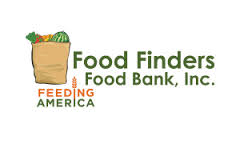
In conjunction with the Map the Meal Gap study, which uses the most recent data from the United States Department of Agriculture (USDA) and Census Bureau, Feeding America has released an interactive map based on its recently released study, The Impact of the Coronavirus on Local Food Insecurity, which used the Map the Meal Gap model to predict changes to food insecurity rates for the overall population and children in response to projected changes to poverty and unemployment in the wake of the coronavirus (COVD-19) pandemic. That analysis shows that progress made to food insecurity in the U.S. this past decade will likely be wiped out and food insecurity rates will climb higher than the peak of the Great Recession, potentially going from more than 37 million people facing hunger in 2018 up to more than 54 million in 2020. Locally, an additional 30,157 people could become food insecure in the wake of the pandemic.
“This data confirms that in the months ahead Food Finders will need continued support from individual and corporate donors, churches and organizations, and local, state, and federal government to prevent widespread hunger in our communities,” said Katy Bunder, President/CEO of Food Finders Food Bank.
Per Map the Meal Gap 2020, all 3,142 counties and county equivalents as well as 436 congressional districts in all 50 states are home to people who struggle with hunger. Here in North Central Indiana, 76,280 people, including 22,480 children, are facing hunger.
According to the COVID-19 impact analysis, all counties across the country will likely see increased rates of food insecurity. In North Central Indiana, Tippecanoe County, the county with the highest overall food insecurity rate is projected to increase from 13 percent to 18 percent this year. White County, which had the lowest overall food insecurity rate in 2018, is projected to see a food insecurity rate of 16 percent compared to its most recent rate of 11 percent.
The Feeding America studies underscore the extent of need that remains in communities across the U.S. While food insecurity affects every community, people of color, and African Americans in particular, are disproportionately impacted as a result of structural disparities. Structural and institutional racism have positioned communities of color as particularly vulnerable to the economic fallout and health consequences of this pandemic. Both pre-pandemic and in 2020, counties with the highest rates of food insecurity are overrepresented by counties with a majority African American population.
Other key findings of Map the Meal Gap 2020 include:
- In eight of the 16 counties served by Food Finders, 50% or more people who are food insecure may not qualify for federal food assistance.
- Map the Meal Gap reports on food price variation across counties. Using data from the Census Bureau’s Current Population Survey (CPS), the study finds that, on average, food-secure individuals report spending $3.09 per person, per meal as of 2018. In North Central Indiana, the cost per meal ranges from $2.40 in Clinton County to $3.18 in Jasper County.
Map the Meal Gap 2020 uses data from USDA, the Census Bureau, Bureau of Labor Statistics and food price data and analysis provided by Nielsen, a global measurement and data analytics company. The study is supported by Conagra Brands Foundation and Nielsen.
Dr. Craig Gundersen, Professor of Agricultural and Consumer Economics at the University of Illinois, Executive Director of the National Soybean Research Laboratory and a member of Feeding America’s Technical Advisory Group is the lead researcher of Map the Meal Gap 2020 and the food insecurity projection analysis.
The Map the Meal Gap 2020map allows policymakers, state agencies, corporate partners, food banks and advocates to develop integrated strategies to fight hunger on a community level.
Separately, a newinteractive map shows the 2020 food insecurity projections compared to the most recent Map the Meal Gap data. To account for local unemployment variation, this new analysis adjusts the national annual unemployment projection due to COVID-19 using projected changes in the unemployment rate by industry and occupation from Goldman Sachs Investment Research and actual percentages of workers by industry from the American Community Survey.
Along with the interactive map and visualizations, Feeding America has alsopublished a series of report briefs, including a summary of key findings as well as analyses on child food insecurity, food price variation and health, disability and food insecurity.
Join the conversation about Map the Meal Gap 2020 on Twitter using #MealGap.
